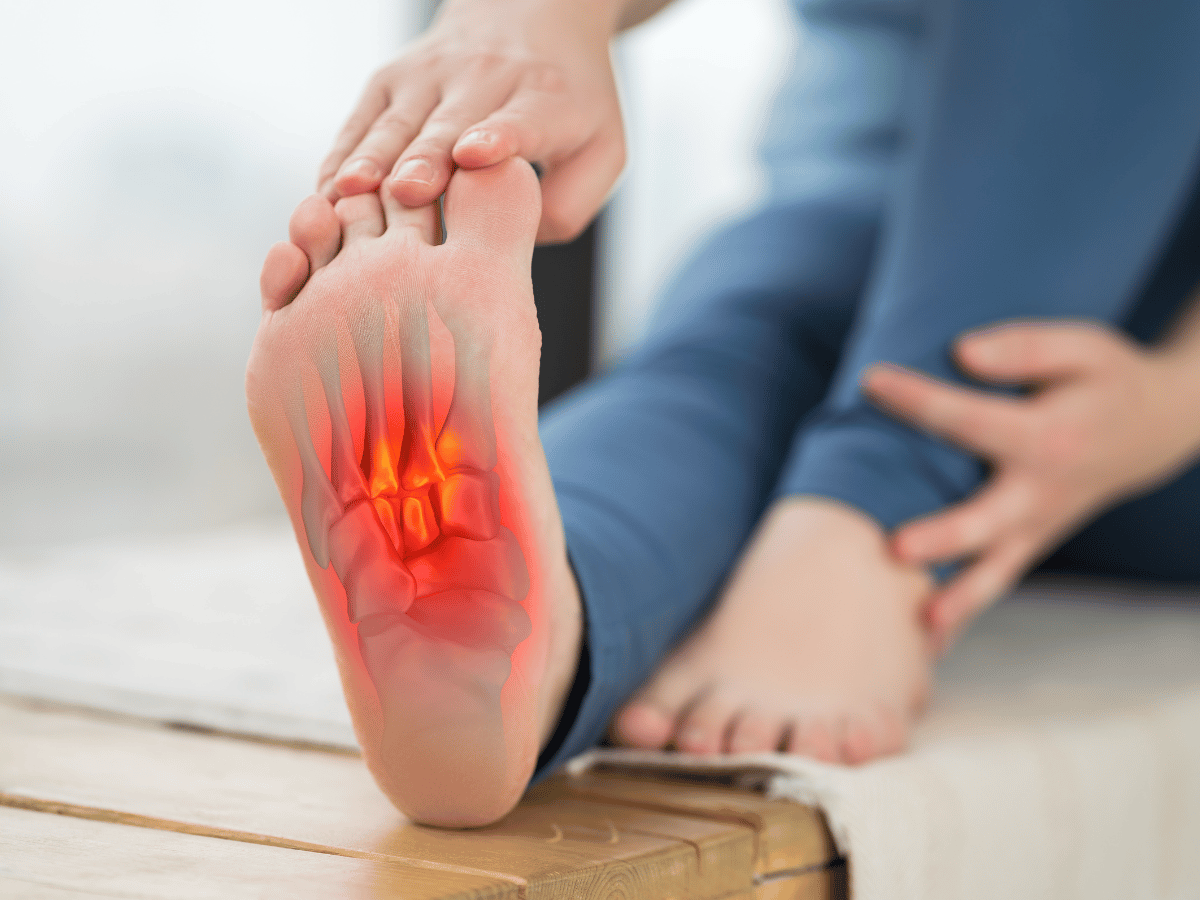
Every day, we depend on our feet to carry us through work, fitness routines, and daily activities, often without giving them the credit or care they deserve. When sharp, stabbing pain starts greeting your first morning steps, it is your body yelling for attention. Welcome to the realities of plantar fasciitis, one of the most common (yet misunderstood) conditions causing heel pain among adults.
Let’s walk through what’s really happening beneath your heel and, more importantly, what you can do about it.
Plantar fasciitis involves inflammation of the plantar fascia, a thick band of connective tissue stretching from your heel to your toes. Its job is to support the arch of the foot and act as a shock absorber. When overused or overstressed, tiny tears develop in the fascia, triggering inflammation and intense pain, especially with those first steps in the morning.
This condition affects around 2 million people each year and nearly 10% of the population at some point in their lives.
We see plantar fasciitis crop up across various age groups, but it is especially prevalent in those between 40 and 60. Several factors create the perfect storm for heel pain:
We have also seen younger athletes develop plantar fasciitis when their training outpaces recovery, an especially common scenario in runners or dancers.
The hallmark symptom is heel pain. But it is not just any pain—patients often describe a stabbing or searing sensation in the bottom of the heel. Here’s what sets plantar fasciitis apart:
While movement can bring temporary relief in the early stages, pushing through the pain risks chronic inflammation.
Most diagnoses are made through a thorough clinical assessment. Physicians typically:
That said, imaging is not always required. In most straightforward cases, a well-trained physician can identify the condition with a physical evaluation alone.
When caught early, plantar fasciitis responds very well to conservative management. Here is a treatment path we often recommend before considering surgery or injections:
In some cases, massaging the foot with a frozen water bottle or tennis ball helps ease tension.
Physical therapy is one of the most underestimated yet powerful tools we have.
Patients who commit to consistent stretching and strengthening under guidance usually experience noticeable relief within weeks.
Let’s not underestimate the power of what’s underfoot. A solid foundation can change everything.
For many of our patients, replacing old, unsupportive shoes has been a game-changer.
Even after symptoms resolve, it is important to keep the fascia happy:
If you are an avid runner, we often suggest alternating activities—such as swimming or cycling—to give your feet a break.
While many people recover with self-care, some cases require more intervention. If your pain:
Then, it is time to consult a physician or podiatrist. In some cases, more advanced interventions like corticosteroid injections or shockwave therapy may be warranted.
The journey with plantar fasciitis is not always quick, but it is almost always manageable.
Most people recover within 6 to 12 months with conservative care. For long-term success, keeping up with stretching, investing in proper footwear, and staying mindful of foot health make all the difference.
As clinicians, nothing is more rewarding than seeing patients regain their mobility, return to activities they love, and walk pain-free again.
If you are waking up to sharp heel pain or find your steps becoming more uncomfortable by the day, it may be time to speak with a specialist. The SFL Medical Group is here to help you walk comfortably again, contact us to schedule an expert consultation today.Plantar fasciitis is the inflammation of the plantar fascia, a ligament on the bottom of your foot that supports your arch. It’s commonly caused by repetitive stress, improper footwear, obesity, or biomechanical issues like flat feet.
Main symptoms include sharp heel pain with the first steps in the morning, pain after rest, stiffness, and discomfort after long periods of standing or walking.
Diagnosis typically involves a physical exam to evaluate foot mechanics and areas of tenderness. Imaging such as X-rays or MRIs may be used to rule out other causes.
Initial treatment includes rest, stretching, physical therapy, proper footwear, and NSAIDs. Severe or persistent cases may require corticosteroid injections or custom orthotics.
Yes, stretching and strengthening routines significantly relieve symptoms. A licensed physical therapist can guide exercises that target both flexibility and support.
Orthotics support proper foot alignment, reduce strain on the fascia, and cushion impact, especially in people with flat feet or high arches.
Most cases improve within 6 to 12 months with conservative care. Chronically inflamed cases may take longer or require advanced interventions.
Yes, maintaining a healthy body weight, wearing supportive shoes, stretching the foot and calf daily, and avoiding barefoot walking on hard surfaces can help prevent recurrence.
If your heel pain lasts for more than two weeks, worsens, or begins affecting your daily life, you should see a healthcare provider to avoid complications or chronic issues.
Surgery is rare and typically reserved for cases that don’t respond to 6–12 months of non-surgical treatment. It involves releasing part of the fascia to relieve tension.
Your well-being is our top priority. Reach out today to discover how our dedicated team can support your health journey.
Have questions or want to learn more? Use the form below to get started!
Connect with South Florida’s trusted multispecialty care team and take control of your health with compassion and convenience.
©2025 South Florida Multispecialty Medical Group. All Rights Reserved.